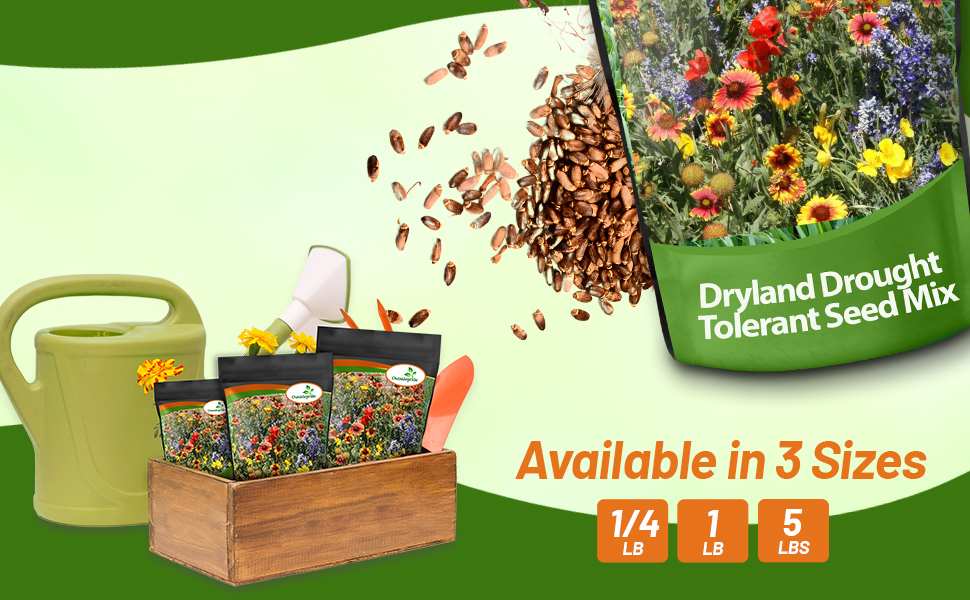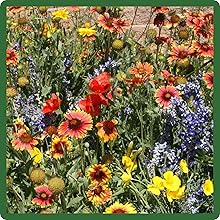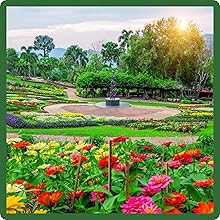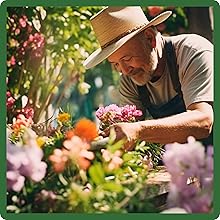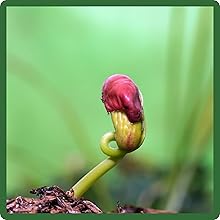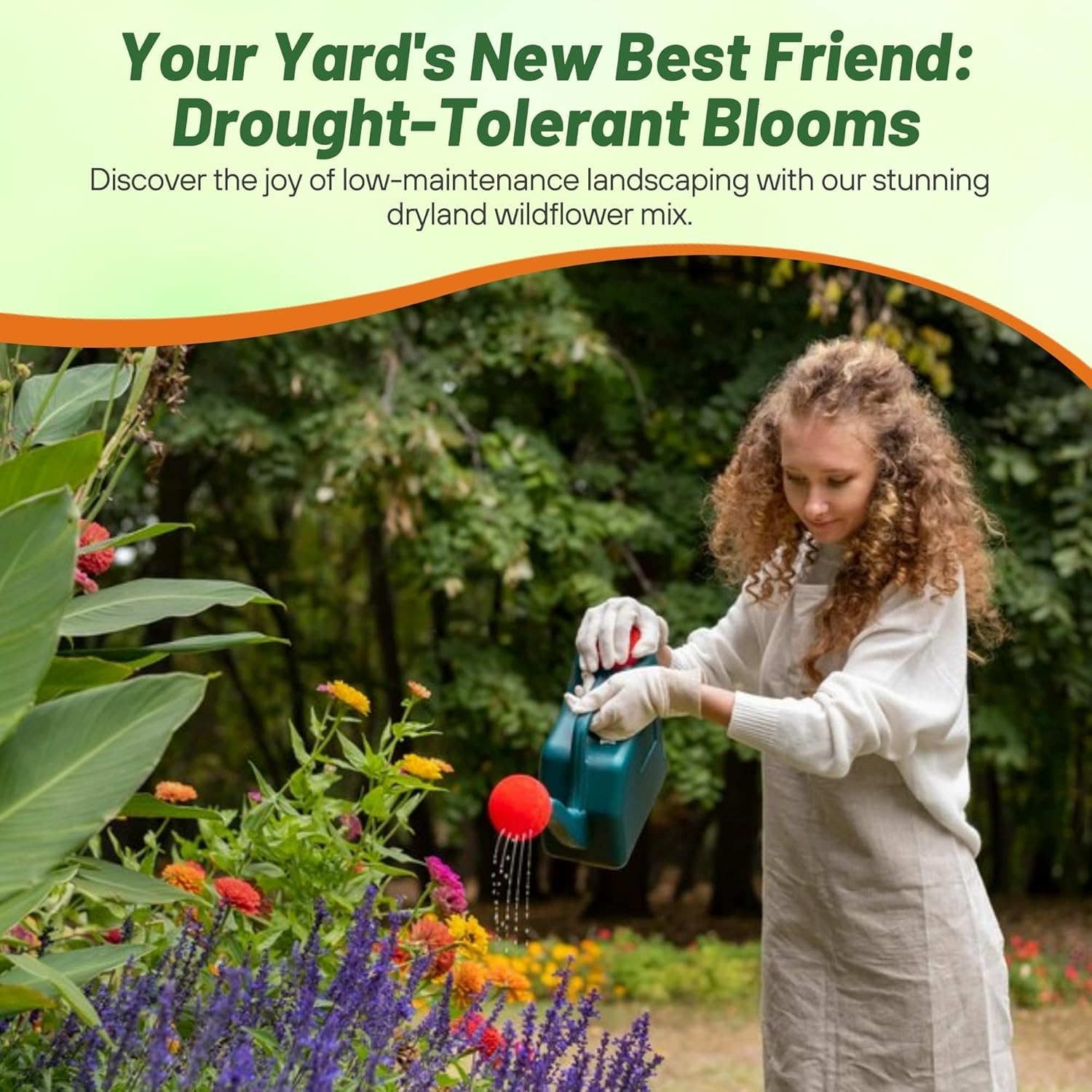The Dryland Wildflower Seeds mixture is a carefully curated blend of 24 drought-tolerant species, perfect for gardens in arid climates. This seed mix combines 50% annuals with 50% biennials and perennials, ensuring a vibrant display of color in the first season and beyond. With flowers like Baby's Breath, Purple Coneflower, and California Poppy, this mix will create a stunning wildflower bed that can reach heights of 36 to 48 inches under normal conditions. Ideal for USDA zones 3-10, these seeds are designed to thrive even in areas with limited moisture, making them an excellent choice for low-maintenance gardening. It is available in 3 different sizes to suit your landscaping needs.
The mix is composed of both annuals, which provide vibrant color in the first season, and biennials/perennials, which ensure continued blooms in the following years. This diversity not only enhances the visual appeal but also creates a more resilient ecosystem, supporting a variety of pollinators. It offers a wide range of textures and hues, making the mix suitable for a rich and varied wildflower garden.
The Dryland wildflower seeds mixture is drought-tolerant because it includes drought resistant plants naturally adapted to survive with limited water. Plants like California Poppy and Purple Coneflower have evolved deep roots and moisture-conserving traits, allowing them to thrive in dry conditions. This makes the mix ideal for areas with infrequent rainfall or minimal irrigation, ensuring the flowers can flourish even with little water.
They are easy to grow because it includes resilient species that thrive in various soils and need minimal care. The seeds can be easily scattered into the soil, and once established, they require little watering. With a mix of annuals and perennials, the flowers bloom quickly and grows year after year with minimal effort. This makes it an ideal choice for gardeners looking to create a beautiful, low-maintenance landscape.
The seeds are selected for their ability to sprout and establish quickly, even in challenging soils or with limited water. Additionally, the recommended planting process, which involves lightly raking the seeds into the soil and keeping them moist until germination, further ensures successful sprouting. The combination of resilient seed types and proper planting techniques contributes to the high germination rate, allowing the wildflowers to establish quickly and flourish.
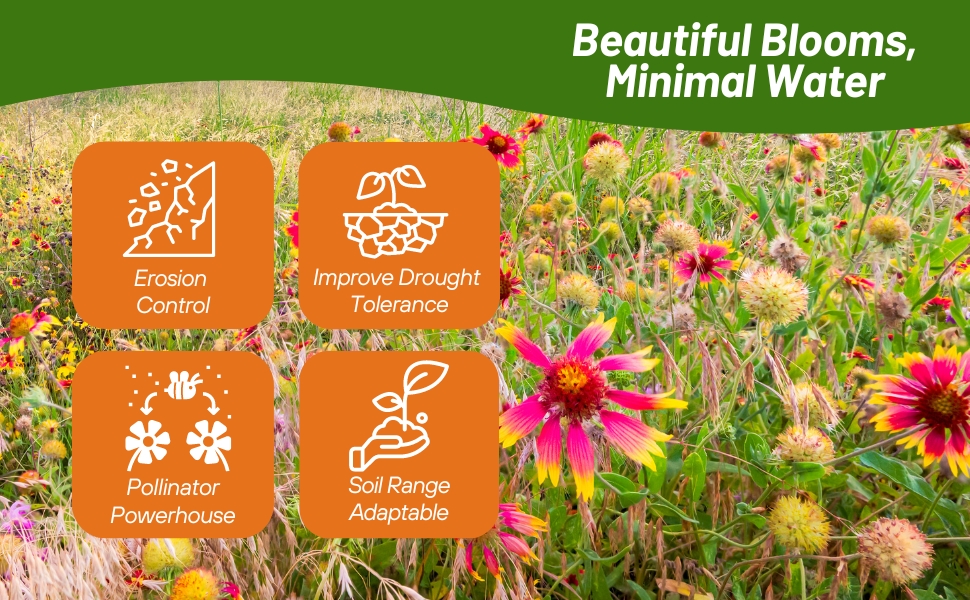
Create a stunning garden with minimal water using our Dryland drought tolerant wild flower seed mix. This seed mixture is nature’s own superhero team, ready to tackle your garden’s toughest challenges! Designed to stop erosion in its tracks, these resilient wildflowers anchor soil and keep it in place. Built to thrive with minimal water, they boost your garden’s drought tolerance while creating a pollinator paradise that attracts bees, butterflies, and all sorts of friendly critters. Whether your soil is sandy, rocky, or somewhere in between, this adaptable mix will sprout beautifully, turning your landscape into a vibrant, low-maintenance oasis!
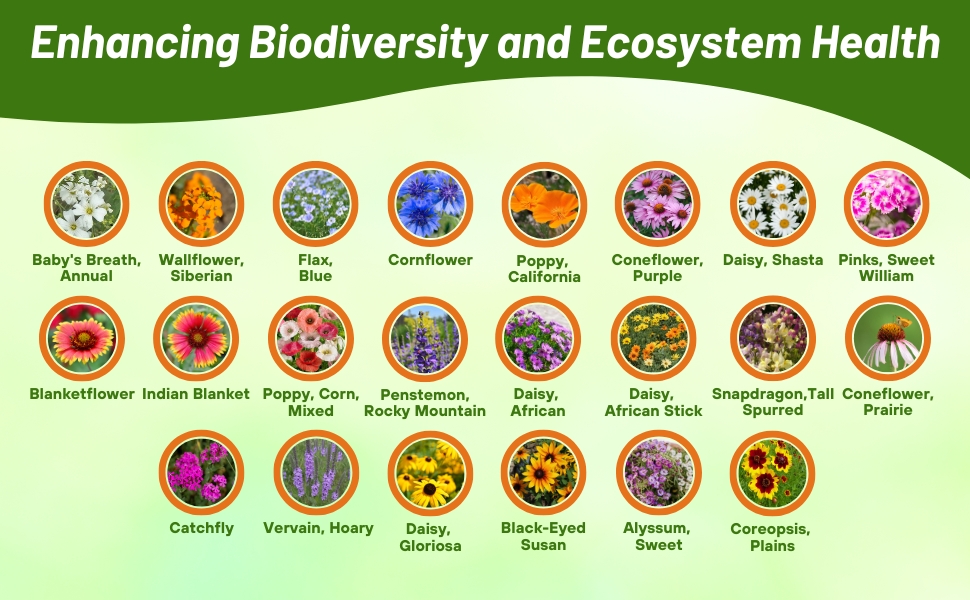
Boost your garden's biodiversity and ecosystem health with the Dryland Drought Tolerant Wild Flower Seed Mix. This mix of 22 species, including Sweet William, Shasta Daisy, and Black-Eyed Susan, supports a diverse range of wildlife, from pollinators to birds. By planting these seeds, you contribute to a healthier ecosystem and help sustain natural balance. These drought-tolerant wildflower seeds are designed for full sun areas and include a mix of annuals and perennials, ensuring continuous blooms. Ideal for creating vibrant meadows or garden beds.
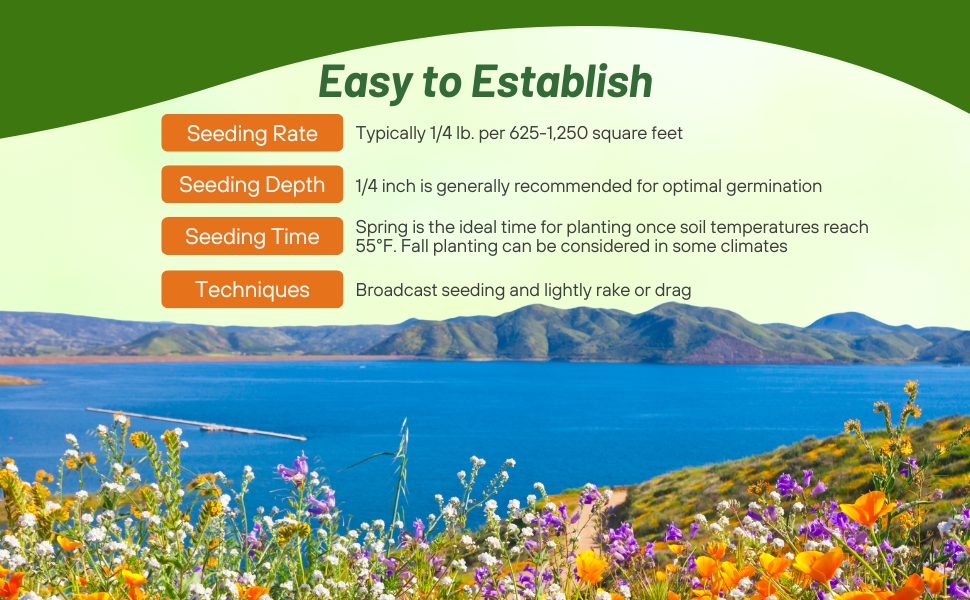
Wild flower seed planting applications vary tremendously from the backyard flower bed to the 5-acre meadow. Various seeding rates are needed depending on the type of application you are considering. For optimal results, plant our pollinator seed mix using the guidelines above. For a meadow-like appearance with scattered wildflowers, use the lower seeding rate. If you prefer an average display with good coverage, the middle range is ideal. For a dense, lush stand with nearly solid wildflowers, go for the upper end of the seeding rate. For instance, 1/4 lb covers 625 - 1,250 sq. ft., and 5 lbs covers 25,000 - 50,000 sq. ft.
Dryland Wildflower Seeds - Dryland wild flower seed mixture is made up of 24 individual species which are drought tolerant. These wildflowers are designed to flourish in the drier climates or areas that do not get moisture on a regular basis. The mix is made up of 50% annuals and 50% biennials/perennials to give a wide variety of colorful flowers for the first season as well as following years. The wildflower bed will reach a height of 36 - 48 inches tall under normal conditions.
Wild flower seed mixture includes (percentages are rounded):
-
17.0% Baby's Breath, Annual
-
13.0% Wallflower, Siberian
-
9.0% Flax, Blue
-
8.0% Cornflower
-
8.0% Poppy, California
-
8.0% Coneflower, Purple
-
4.0% Daisy, Shasta
-
4.0% Pinks, Sweet William
-
4.0% Blanketflower
-
4.0% Indian Blanket
-
3.0% Poppy, Corn, Mixed
-
3.0% Penstemon, Rocky Mountain
-
2.0% Daisy, African
-
2.0% Daisy, African Stick
-
2.0% Snapdragon, Tall Spurred
-
2.0% Coneflower, Prairie
-
1.5% Catchfly
-
1.5% Vervain, Hoary
-
1.0% Daisy, Gloriosa
-
1.0% Black-Eyed Susan
-
1.0% Alyssum, Sweet
-
1.0% Coreopsis, Plains
Seeding rate: 1/4 LB Per 625 - 1,250 SF or 5 LBS 25,000 - 50,000 SF
Question: Why such a broad range on the seeding rate?
Answer: Wild flower seed planting applications vary tremendously from the back yard flower bed to the 5 acre meadow. Various seeding rates are needed depending on the type of application you are considering. For your specific application use this for your guideline:
-
For a meadow look with scattered wildflowers using the lower end of the seeding rate
-
For an average display with good coverage use the middle range of the seeding rate
-
For a lush stand with almost solid wildflowers choose the upper end of the seeding rate

